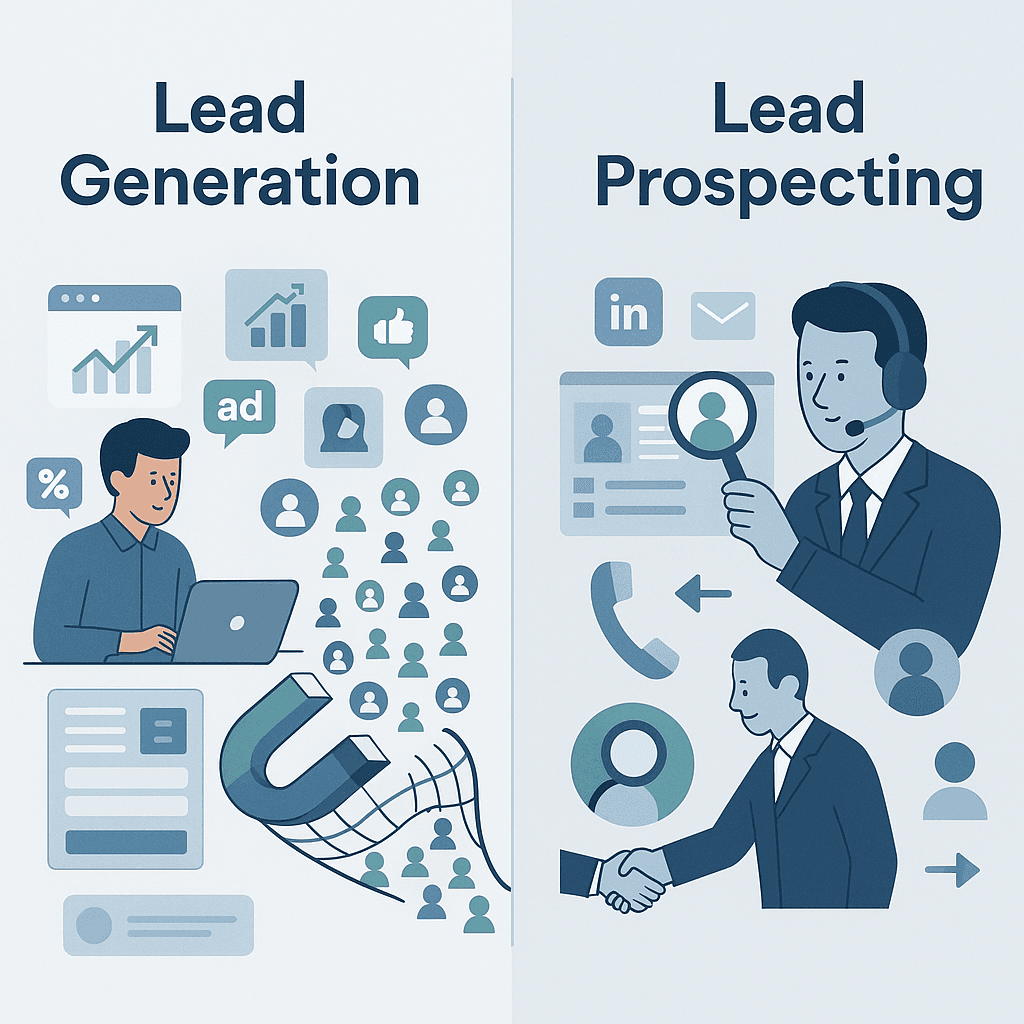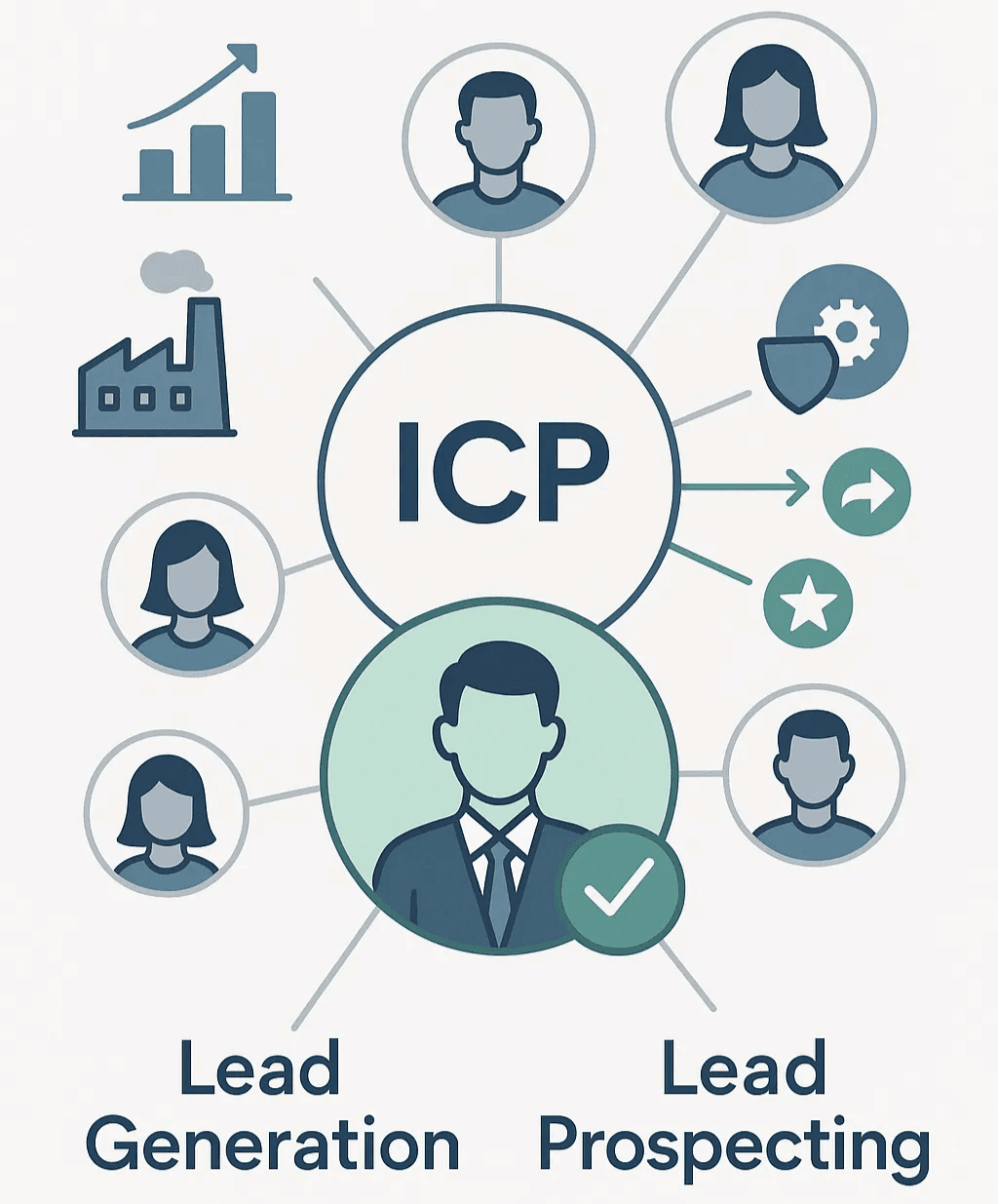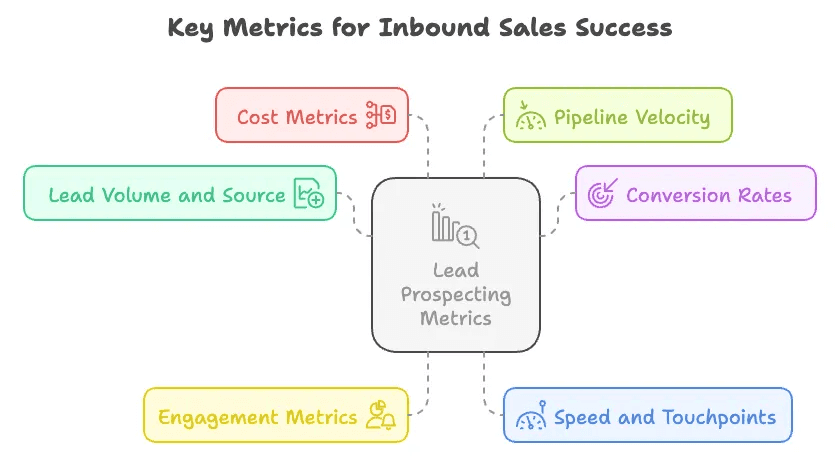Let me take you back to my early days in sales. Picture this: stacks of business cards, endless spreadsheets, and a phone glued to my ear—trying to turn cold contacts into warm leads. Fast forward to today, and the landscape has changed dramatically. We’re living in an era where sales teams have access to more data, more channels, and more automation than ever before. But here’s the twist: even with all these tools, nearly half of B2B companies still say generating enough quality leads is their biggest challenge (). And let’s be honest, nobody wants to spend their days chasing ghosts or, worse, paying interns to copy-paste emails from websites (your CFO will thank you for avoiding that one).
That’s why I’m excited to share 10 practical lead prospecting strategies that actually work—whether you’re an inbound sales pro, an outbound hustler, or somewhere in between. I’ll also walk you through how to build a lead prospecting workflow with Thunderbit’s (yes, the one my team and I built to save you from spreadsheet purgatory). Ready to fill your pipeline with leads that convert? Let’s dive in.
Why Lead Prospecting Matters for Revenue Growth
Lead prospecting isn’t just a box to check—it’s the engine that drives your revenue. Companies that prioritize qualified leads and systematic prospecting see real results. In fact, say their revenue growth is directly tied to focusing on lead quality over quantity. And when you nurture those leads properly, you can generate .
But it’s not just about stuffing the funnel with anyone who’ll listen. Effective prospecting means filling your pipeline with the right people—those who are most likely to become loyal customers. This approach leads to higher conversion rates, bigger deals, and faster sales cycles. For example, companies using account-based prospecting have seen .
And here’s a stat that always makes me do a double-take: inbound leads (like those from organic search) close at 14.6%—ten times higher than outbound leads at just 1.7%. But you need both volume and targeted outreach to keep the pipeline healthy. Prospecting ensures you’re not leaving revenue on the table—or worse, leaving it for your competitors.
Lead Prospecting vs. Lead Generation: Clearing Up the Confusion
Let’s clear up a common mix-up: lead prospecting and lead generation are not the same thing, even though they’re often used interchangeably.
- Lead Generation is typically a marketing-led activity. Think of it as casting a wide net: you’re attracting potential leads through content, ads, events, and capturing their interest (usually via sign-ups or inquiries). These are your inbound leads—folks who have raised their hand but haven’t been vetted yet ().
- Lead Prospecting is where sales takes the baton. It’s about actively identifying and reaching out to potential customers—usually outbound. Sales reps qualify these leads, turning them into prospects worth pursuing. This involves research, cold outreach, networking, and building relationships ().

Here’s the quick-and-dirty difference:
- Who leads it? Marketing handles lead gen; sales owns prospecting.
- Approach: Lead gen is broad and inbound; prospecting is targeted and outbound.
- Lead vs. Prospect: A lead is anyone who’s shown interest; a prospect is a qualified lead worth a sales effort.
Both functions overlap and complement each other. The best-performing companies balance both—using marketing to generate interest and sales to zero in on the most promising leads (). In other words: marketing fills the funnel, prospecting works the funnel.
Building Your Ideal Customer Profile (ICP) for Better Lead Prospecting
Before you start dialing, emailing, or scraping, you need to know who you’re after. Enter the Ideal Customer Profile (ICP)—your north star for prospecting.
An ICP is a detailed description of your perfect customer: the kind of company (or person) who will benefit most from your solution and provide the most value in return (). Companies that fit your ICP are more likely to buy, stick around, and refer others.

Key ICP traits to include:
- Industry or vertical: Where do your best customers work?
- Company size: Revenue, employees, or customer count (e.g., “mid-market tech companies with 100–500 employees”).
- Location: Are you targeting specific regions?
- Pain points and needs: What problems do your ideal customers need solved?
- Decision-maker role: Who’s calling the shots (job titles, seniority)?
A strong ICP focuses your prospecting efforts and boosts efficiency. Companies that align sales and marketing around a clear ICP see . Plus, you’ll enjoy .
Pro tip: Analyze your best existing customers to spot common attributes. Make your ICP specific enough to be actionable, but not so narrow that you run out of prospects.
10 Practical Lead Prospecting Strategies for Sales Teams
Let’s get to the good stuff. Here are 10 actionable strategies—mixing inbound and outbound tactics—to fill your pipeline with high-quality leads.
1. Cold Calling with a Modern Twist
Cold calling isn’t dead—it just needed a makeover. Traditional “spray and pray” calling is out. Today, it’s all about data-driven targeting.
- Target your calls: Use your ICP to focus on high-potential prospects. Leverage triggers like recent funding, new hires, or company news to time your outreach.
- Use data to improve connect rates: Direct phone numbers are gold. It takes an average of to reach a B2B prospect, so don’t give up after one try. Calling between 4–5 PM local time is .
- Be relevant, not intrusive: Reference something specific about the prospect. A simple “How have you been?” can .
- Combine calls with other touches: Pair calls with email cadences—this can .
Bottom line: cold calling works when it’s focused, timely, and part of a multi-touch sequence.
2. LinkedIn Networking and Social Selling
LinkedIn is the B2B prospector’s playground. , and come from the platform.
- Optimize your profile: Make it clear, credible, and focused on how you help clients.
- Use Sales Navigator: Laser-target by title, industry, company size, and geography.
- Engage with content: Comment on posts, share insights, and build relationships before pitching. .
- Personalize connection requests: Mention something specific to the prospect. Personalized messages can .
- Provide value: Share relevant content to establish yourself as a thought leader. Social selling leaders create .
Make LinkedIn a daily habit—even 15 minutes a day can yield a steady stream of warm leads.
3. Email Outreach with Personalization
Email is still king—if you do it right. , but generic blasts get ignored (average response rate: ).
- Personalize everything: Emails with a , and multi-point personalization can .
- Compelling subject lines: 33–47% of people open emails based on the subject line alone ().
- Keep it short and value-focused: Focus on the prospect’s pain point and offer a solution.
- Use tools for finding and verifying emails: Thunderbit’s can pull emails from any website in one click. Always verify emails to avoid bounces.
- A/B test and track: Test templates, follow up at least 3 times ().
The goal: make your prospect feel like they’re the only one you’re emailing.
4. Leveraging Referrals from Existing Customers
Referrals are the warmest leads you’ll ever get. Referred customers have a and than other channels.
- Identify your happiest customers: Ask after a big win or when they praise you.
- Make it easy: Offer a referral program or simple email templates to forward.
- Tap your broader network: Don’t forget partners, investors, or even friends.
- Provide excellent service: Happy customers refer more—, but only 29% do unless prompted.
Companies with formal referral processes have .
5. Attending Industry Events and Trade Shows
In-person events are still a goldmine. , and from exhibitors they meet.
- Choose the right events: Go where your ICP hangs out.
- Pre-event networking: Schedule meetings in advance using attendee lists or apps.
- Work the booth: Be personable, offer something interactive, and collect info.
- Organize leads on the spot: Take notes on each contact.
- Follow up fast: .
A single conference can generate a quarter’s worth of pipeline if you play your cards right.
6. Content Marketing for Inbound Lead Generation
Content is a magnet for high-quality inbound leads. use content marketing for lead gen, and rely on it.
- Create lead magnets: E-books, checklists, webinars—offer something valuable in exchange for contact info.
- Invest in SEO: Evergreen content brings in leads over time. Content marketing costs .
- Gated vs. ungated: Use forms for premium content, but keep some content open for SEO.
- Nurture with drip campaigns: Most buyers consume before talking to sales.
Teach, don’t just sell. Content builds trust before the relationship even starts.
7. Paid Advertising and Retargeting
Sometimes, you need to pay to play. Paid ads put your message in front of the right people—fast.
- Laser-focus targeting: Use LinkedIn, Google, or Facebook to reach your ICP.
- Offer something compelling: Lead magnets or demo requests work better than “Buy now.”
- Retargeting: Show ads to people who’ve already interacted with your site. Retargeted users are .
- Optimize: Track cost per lead and double down on what works.
Paid ads can jumpstart your pipeline and retargeting keeps your brand top-of-mind.
8. Account-Based Marketing (ABM) for High-Value Prospects
When a handful of big accounts can move the needle, ABM is your best friend. say ABM yields higher ROI than any other strategy.
- Select target accounts: Collaborate with marketing to pick your dream clients.
- Personalize everything: Custom messaging, content, and even ads for each account.
- Engage multiple stakeholders: Multi-threading ensures you reach all decision-makers.
- Use ABM tools: Platforms like Terminus or Demandbase help coordinate efforts.
ABM is personalized prospecting at scale—perfect for B2B with big contracts.
9. Using AI Web Scraper Tools for Lead Prospecting
This is where things get fun (and, okay, a little nerdy). AI web scrapers like automate the grunt work of finding and collecting lead data from the web.
- Quickly gather contacts: Scrape directories, social sites, or industry lists in minutes instead of hours.
- Scrape subpages for more data: Thunderbit’s “Scrape Subpages” feature can visit each profile or listing for enriched info.
- Cloud scraping for scale: Scrape and handle large jobs with ease.
- AI Suggest Columns: Let AI figure out what fields to extract—no coding needed ().
- Export anywhere: Instantly send your data to Excel, Google Sheets, Airtable, or Notion ().
If you’re still paying interns to copy-paste leads, your CFO probably wants a word ().
10. Automating Lead Qualification and Follow-Up
Generating leads is only half the battle. Automation ensures you don’t drop the ball on follow-up.
- Lead scoring: Use your CRM to score leads based on fit and engagement.
- Fast response: Contacting a lead within 5 minutes makes you .
- Drip nurture campaigns: Automated emails keep you top-of-mind—most leads need before they’re ready to buy.
- Automate routine tasks: Use tools to auto-log activities, set reminders, and recycle cold leads.
Companies with strong automation see a .
How to Build a Lead Prospecting Workflow with Thunderbit
Let’s put it all together. Here’s how I’d build a modern prospecting workflow using .
Step 1: Define Your Lead Criteria
Start with your ICP. Write down exactly who you want to target. For example: “SaaS companies in FinTech with 10–50 employees, preferably VC-funded, targeting CTOs or Heads of IT.”
Next, identify where these leads live online—think Crunchbase, Tracxn, LinkedIn, or industry directories. Thunderbit has for many popular sites.
Step 2: Use Thunderbit’s AI Suggest Fields Feature
Once you’re on a target site, click “AI Suggest Fields.” Thunderbit’s AI scans the page and proposes the most relevant columns—like Company Name, Industry, Funding Stage, etc. You can tweak or add custom fields as needed ().
If you want to get fancy, you can add custom AI prompts for each field—like labeling, formatting, or even translating data on the fly.
Step 3: Scrape and Export Lead Data
Hit “Scrape” and let Thunderbit work its magic. It’ll handle pagination, subpages, and even tricky layouts. Review your data in Thunderbit’s interface, then export it to Excel, Google Sheets, Airtable, or Notion ().
Want to go deeper? Use Thunderbit’s to pull emails from each company’s website or LinkedIn page. You’ll have a ready-to-go list of leads and contacts in no time.
Step 4: Automate Follow-Up and Lead Nurturing
Now, import your leads into your CRM or outreach tool. Set up automated sequences: personalized emails, LinkedIn touches, or even scheduled calls. If you’re using HubSpot, Salesforce, or a tool like Mailshake, you can automate follow-up based on lead actions (opens, clicks, replies).
Thunderbit also supports scheduled scraping—set it to refresh your lead list every week or month, so your pipeline never runs dry.
And don’t forget to use the data you scraped for personalization. Reference funding stage, industry, or recent news in your outreach for higher response rates.
Best Practices for Lead Prospecting Success
No matter which strategies you use, a few habits separate the top performers from the rest:
- Be consistent and persistent: Prospecting is a daily (or at least weekly) habit. Most leads need before they bite.
- Personalize and research: Quality trumps quantity. Use the data you collect to make every outreach relevant.
- Keep data clean: B2B contacts decay at . Regularly update and verify your lists.
- Align sales and marketing: Share definitions, feedback, and content. Companies with tight alignment see .
- Measure what matters: Track lead volume, conversion rates, and cost per lead. Double down on what works.
- Avoid burnout and spam: Use automation for the grunt work, but keep the human touch. Don’t blast unqualified lists or use shady tactics.
Measuring and Optimizing Your Lead Prospecting Efforts
You can’t improve what you don’t measure. Here’s what to track:

- Lead volume and source: Where are your leads coming from? Which channels perform best?
- Conversion rates: From lead to qualified lead to meeting to closed deal. The average lead-to-customer conversion is .
- Engagement metrics: Email open/reply rates, call connect rates, LinkedIn responses.
- Speed and touchpoints: How quickly do you follow up? How many touches per lead?
- Cost metrics: Cost per lead, cost per acquisition, and time spent per deal.
- Pipeline velocity: How fast do leads move through your funnel?
Use these metrics to identify bottlenecks, A/B test improvements, and coach your team. And remember: optimization is an ongoing process. Small tweaks can lead to big gains over time.
Conclusion: Turn Lead Prospecting into Revenue Growth
Lead prospecting is the engine behind revenue growth—and with the right strategies and tools, you can make that engine run like a Tesla (minus the autopilot glitches). We’ve covered 10 practical strategies, from cold calling and social selling to content marketing, ABM, and AI-powered scraping with Thunderbit.
The key is to blend inbound and outbound tactics, personalize every touch, and automate the busywork so you can focus on what matters: building relationships and closing deals. Companies that modernize their prospecting see .
If you haven’t tried Thunderbit yet, and see how AI web scraping can feed your pipeline. You can get started for free and join over 20,000 users who are already prospecting smarter.
So, what’s your next move? Pick a couple of strategies from this list, put them into action, and watch your pipeline (and revenue) grow. In today’s market, those who prospect smarter—not just harder—will win.
And if you ever find yourself tempted to pay an intern to copy-paste leads from a website, remember: Thunderbit is here to save you (and your intern) from that fate. Happy prospecting!
FAQs
1. What’s the difference between lead generation and lead prospecting?
Lead generation is a marketing-led effort focused on attracting interest through content, ads, and events—bringing in leads who have shown interest. Lead prospecting is sales-led and involves actively identifying, qualifying, and reaching out to potential customers through outbound methods like calls, emails, and social outreach.
2. Why is having an Ideal Customer Profile (ICP) important for lead prospecting?
An ICP helps sales teams focus their efforts on prospects most likely to convert, providing the most value. It includes details like industry, company size, location, pain points, and decision-maker roles. Targeting based on ICP improves win rates, customer retention, and marketing ROI.
3. What are the top strategies for effective lead prospecting?
Some top strategies include modern cold calling, LinkedIn networking, personalized email outreach, leveraging customer referrals, attending trade shows, content marketing, paid advertising, account-based marketing (ABM), using AI web scrapers like Thunderbit, and automating follow-up workflows.
4. How can Thunderbit improve lead prospecting?
Thunderbit’s AI web scraper automates the process of gathering lead data from websites. It can extract emails, scrape directories, enrich data through subpages, and export to various platforms like Excel or Airtable. Its AI features help identify relevant data fields, making lead collection faster and more accurate.
5. What metrics should I track to optimize lead prospecting performance?
Key metrics include lead volume and source, conversion rates at each sales stage, engagement rates (email replies, call connects), follow-up speed, number of touchpoints, cost per lead/acquisition, and pipeline velocity. Tracking these helps identify bottlenecks and improve overall sales effectiveness.
Learn More: